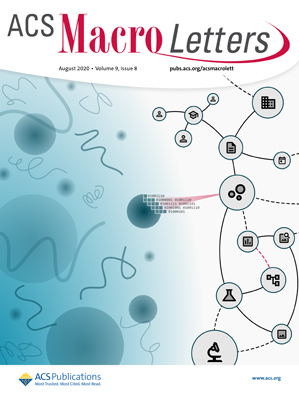作为生物材料骨形成模型的体外绒毛膜试验
IF 5.2
Q1 POLYMER SCIENCE
引用次数: 0
摘要
生物材料在骨组织工程中发挥着越来越关键的作用。然而,要实现有效的临床转化,需要谨慎选择生物仿生材料,并对其有效性和安全性进行全面评估。现有的体外和体内模型存在时间和成本限制、侵入性程序以及动物模型与临床结果不一致等缺点。因此,人们需要一种替代模型。我们假设鸡胚胎绒毛膜可作为生物反应器,用于评估支架上骨形成的初始迹象。与此同时,我们还研究了之前制作的纤维蛋白-海藻酸盐-磷酸钙生物材料(FACaP)的成骨潜力。通过 RUNX-2 和α平滑肌肌动蛋白标记物,我们观察到血管浸润了支架,并出现了骨形成的早期迹象。傅立叶变换红外光谱法评估了支架的化学成分,离子色谱法评估了钙离子的释放。最后,用原子力显微镜对形貌进行了检测。总之,该系统为骨组织工程中的体内模型提供了简单的改进,并凸显了 FACaP 作为血管生成和成骨生物材料在非承重应用中的巨大潜力。本文章由计算机程序翻译,如有差异,请以英文原文为准。

Ex Ovo Chorioallantoic Membrane Assay as a Model of Bone Formation by Biomaterials
Biomaterials play an increasingly critical role in bone tissue engineering. However, achieving effective clinical translation requires a careful choice of biomimetic materials and thorough assessment of their efficacy and safety. Existing in vitro and in vivo models have drawbacks including time and cost constraints, invasive procedures, and discordance between animal models and clinical outcomes. Therefore, there is a demand for an alternative model. We hypothesized that the chick embryo chorioallantoic membrane can serve as a bioreactor to evaluate the initial sign of bone formation on scaffolds. In parallel, we investigated the osteogenic potential of a previously fabricated fibrin-alginate-calcium phosphate biomaterial (FACaP). Blood vessels were observed to infiltrate the scaffolds with early signs of bone formation, confirmed via RUNX-2 and alpha smooth muscle actin markers. The scaffolds’ chemical composition was evaluated by Fourier-transform infrared spectroscopy, and ion chromatography was used to assess calcium ion release. Finally, the topography was examined by atomic force microscopy. In conclusion, this system offers simple refinement for in vivo models in bone tissue engineering and highlights the great potential of FACaP as an angiogenic and osteogenic biomaterial for non-load-bearing applications.
求助全文
通过发布文献求助,成功后即可免费获取论文全文。
去求助
来源期刊
CiteScore
10.40
自引率
3.40%
发文量
209
审稿时长
1 months
期刊介绍:
ACS Macro Letters publishes research in all areas of contemporary soft matter science in which macromolecules play a key role, including nanotechnology, self-assembly, supramolecular chemistry, biomaterials, energy generation and storage, and renewable/sustainable materials. Submissions to ACS Macro Letters should justify clearly the rapid disclosure of the key elements of the study. The scope of the journal includes high-impact research of broad interest in all areas of polymer science and engineering, including cross-disciplinary research that interfaces with polymer science.
With the launch of ACS Macro Letters, all Communications that were formerly published in Macromolecules and Biomacromolecules will be published as Letters in ACS Macro Letters.

 求助内容:
求助内容: 应助结果提醒方式:
应助结果提醒方式:


